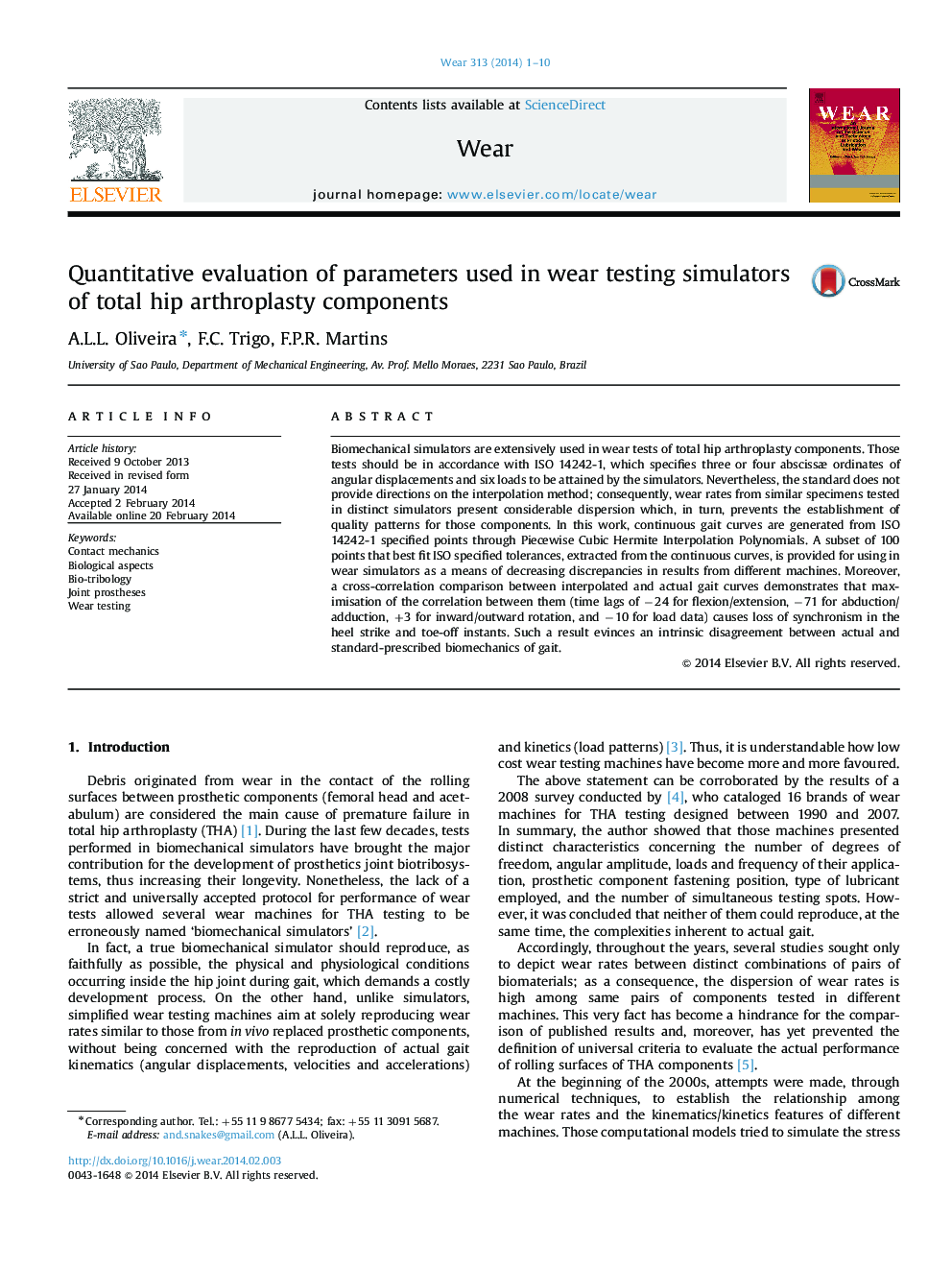| Article ID | Journal | Published Year | Pages | File Type |
|---|---|---|---|---|
| 617359 | Wear | 2014 | 10 Pages |
•Build actual gait curves from the points specified by ISO 14242-1.•Set up of calibration for wear simulators that seek to comply with ISO 14242-1.•Providing a table containing 100 points that best fit tolerances of the standard.•A quantitative comparison between interpolated and actual gait curves.
Biomechanical simulators are extensively used in wear tests of total hip arthroplasty components. Those tests should be in accordance with ISO 14242-1, which specifies three or four abscissæ ordinates of angular displacements and six loads to be attained by the simulators. Nevertheless, the standard does not provide directions on the interpolation method; consequently, wear rates from similar specimens tested in distinct simulators present considerable dispersion which, in turn, prevents the establishment of quality patterns for those components. In this work, continuous gait curves are generated from ISO 14242-1 specified points through Piecewise Cubic Hermite Interpolation Polynomials. A subset of 100 points that best fit ISO specified tolerances, extracted from the continuous curves, is provided for using in wear simulators as a means of decreasing discrepancies in results from different machines. Moreover, a cross-correlation comparison between interpolated and actual gait curves demonstrates that maximisation of the correlation between them (time lags of −24 for flexion/extension, −71 for abduction/adduction, +3 for inward/outward rotation, and −10 for load data) causes loss of synchronism in the heel strike and toe-off instants. Such a result evinces an intrinsic disagreement between actual and standard-prescribed biomechanics of gait.
